Oaks are luscious trees that offer a lot of beautiful shade. You may wonder how oak trees reproduce and if they're self-pollinating. We researched these topics to deliver definite answers.
Oak trees can be self-pollinating, but this rarely happens. Cross-pollination is the predominant form of reproduction among oak trees.
The mighty oak tree in your backyard is a sight to behold. Its thick foliage provides the shade your family enjoys. Keep reading to learn how the oak tree grows and reproduces.
Do Oak Trees Self-Pollinate?
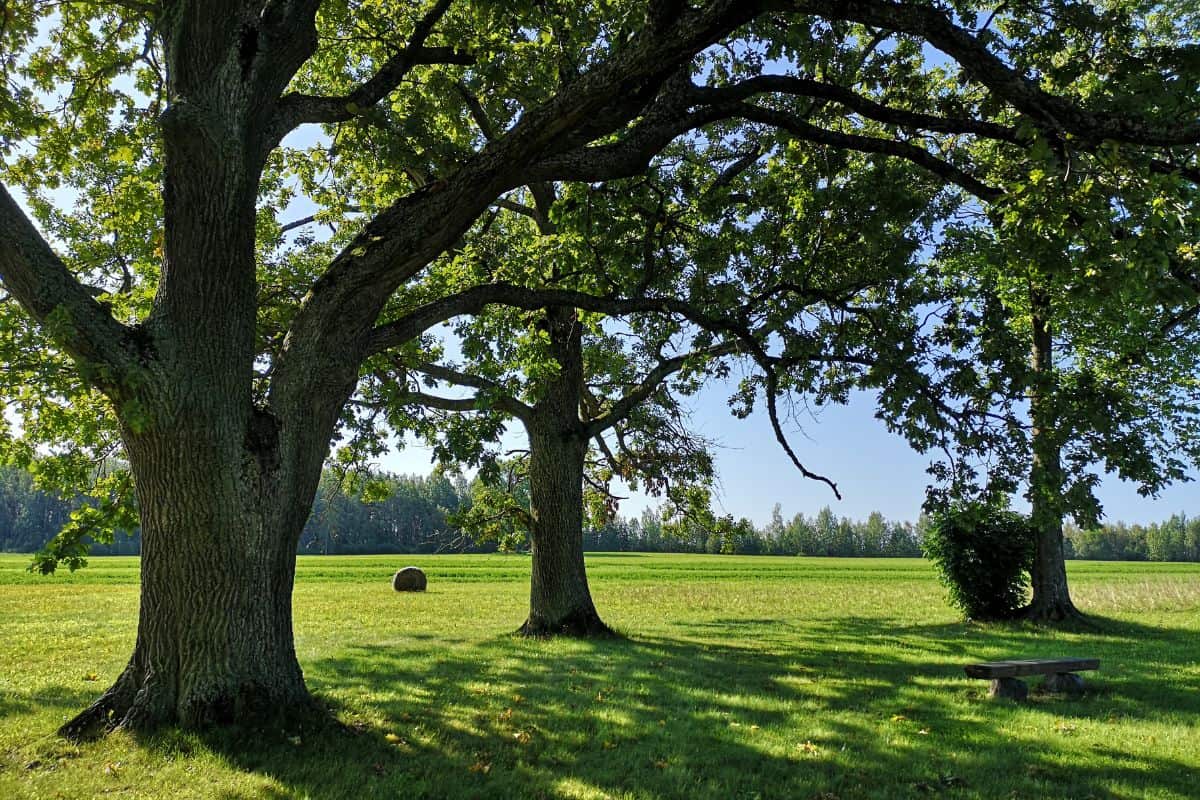
Genetically, oak trees are hermaphroditic or monoecious. This means that male (staminate) and female (pistillate) flowers grow on the same tree. In this scenario, it would be logical to say that self-pollination will naturally occur. But this is not the case!
A study published by the International Oak Society concludes that self-pollination, "selfing," or asexual reproduction rarely happens in oak trees. To put it in numbers, in only 3.5 % of instances, viable acorns resulted from self-pollination.
Plant geneticists add that the innate nature of oak trees inhibits self-pollination because there's self-incompatibility. The female flowers will only open to be fertilized after the male flowers on the same tree have completely released all their pollen.
These preconditions promote cross-pollination rather than self-pollination. It isn't surprising that oak trees get easily hybridized. So, the predominant form of reproduction is sexual pollination from another tree.
How Do Oak Trees Reproduce?

The reproduction of oak trees will lead to how acorns develop. The warm temperatures of spring, usually at the beginning of April, favor the blooming of oak tree flowers. You will readily recognize the male flowers or catkins with their long, worm- or tube-like structures that droop from the branches.
The female flowers grow at the upper portion of the crown. They grow beneath the leaves and resemble buds. They appear a week later than the males.
The male flowers produce tons of pollen and shed off by mid-April, lasting for two weeks. Their drooping structure makes the pollen detach easily and get blown by the wind. Oaks predominantly germinate through wind pollination.
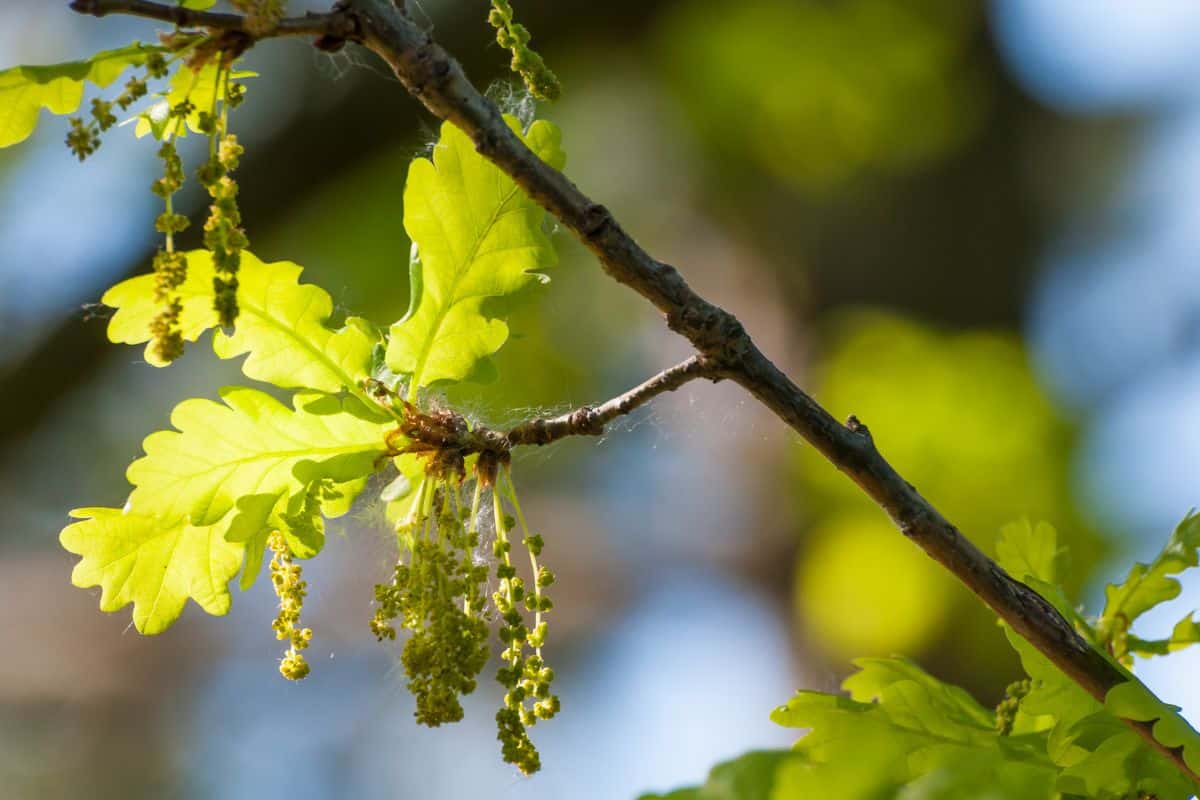
High winds and insects spread the pollen over short and long distances. Moths and butterflies are the most common pollinators.
When pollen lands on a female flower, an acorn begins to develop. Since a large volume of pollen is produced, acorn production can be significant. You may see acorns scattered over the sidewalk, pavement, and yard.
Although acorn production can be abundant, only a few sprout and grow into new oak trees because they are a diet staple among wildlife, insects, and fungi. Acorns are protein-rich. Blue jays, woodpeckers, wild turkeys, squirrels, deer, bears, chipmunks, and other rodents eat them.

Acorn production can also get low or be delayed due to external factors. Heavy rainfall, damp air, freezing temperatures, and strong winds can affect pollen distribution or damage the male flowers. Weevils also feast on developing acorns.
Is Pollen From Oak Trees Bad?
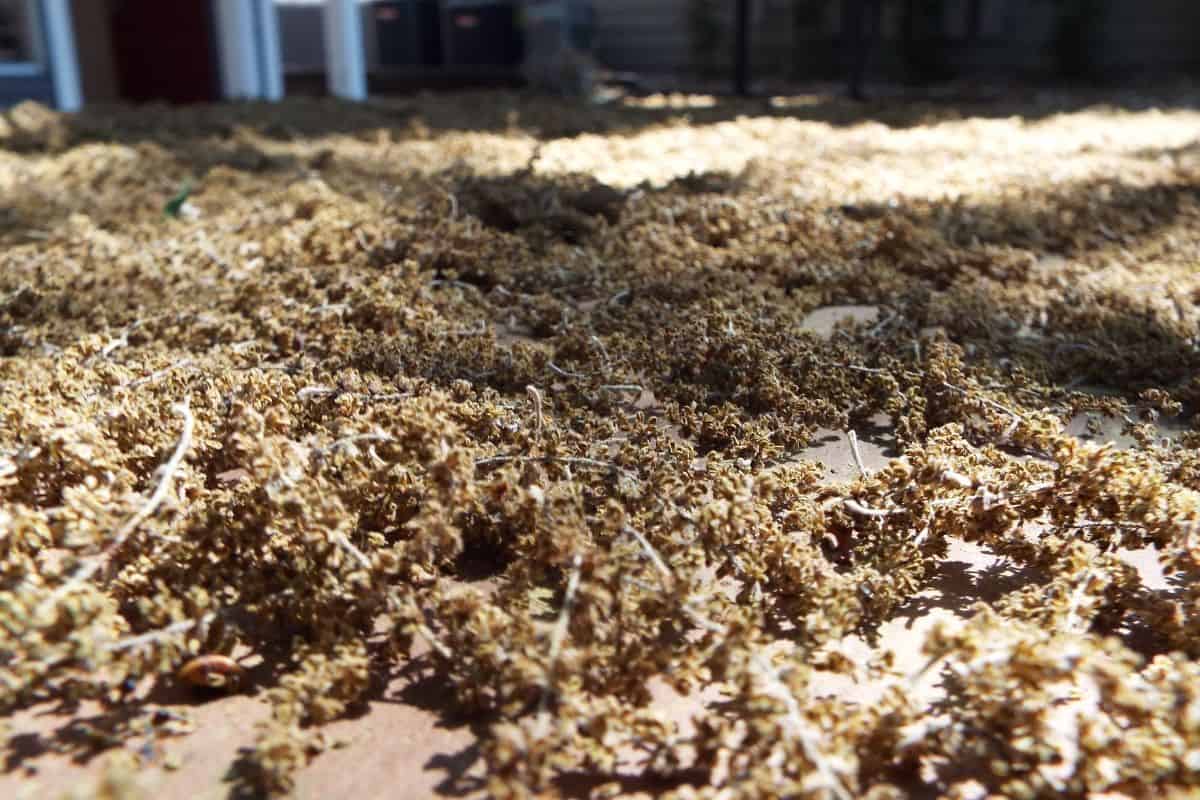
The oak tree is considered one of the worst triggers of pollen allergies. Pollen production is from February to May, with a peak in mid-April. The allergy can be full-blown when pollen levels are high.
Individuals who are allergic to oak pollen will endure seasonal suffering since the tree has a long production period. Oak pollen is intense during the early morning hours.

Pollen grains from the oak tree are very fine and powdery and readily spread once released into the air. Oak pollen can stay airborne for long periods. Due to its fine texture, it can be easily inhaled. It can also attach to surfaces, including your clothes and hair.
When the pollen count is high in a certain area, the pollen may leave yellow smudges on cars parked near a tree. You don't need to get close to an oak tree to be affected by its pollen. The pollen-laden air is enough to trigger an allergic reaction.
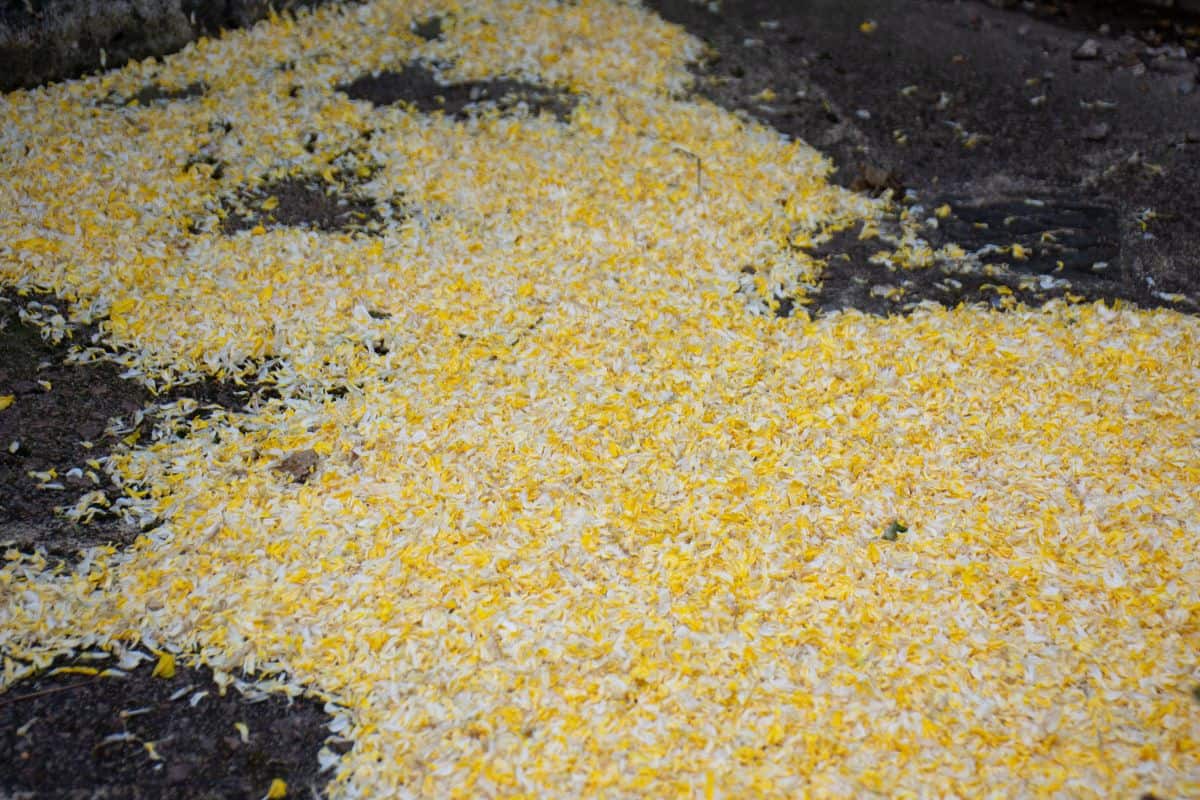
What Are The Indicators Of Pollen Allergy?
In some cities, the Asthma and Allergy Foundation of America has set up systems to monitor the daily pollen count so that allergy sufferers can be aware of when their symptoms might get worse and take the necessary precautions. Here is a list of the symptoms to watch out for:
- Nasal congestion caused by a stuffy nose
- Itchy, watery eyes and a swollen under-eye area
- Dry and itchy throat with coughing
- Constriction of the airways.
- Sinus pressure and facial pain. This could be a serious concern.
How Can You Lessen Pollen Allergy?
Unfortunately, as medical experts say, it is highly unlikely that the seasonal pollen allergy will disappear. Luckily, there are medications, such as antihistamines and allergy shots, that can help relieve the symptoms.
An antihistamine affords relief from the irritating symptoms of seasonal allergic rhinitis. It acts as a decongestant and helps relieve the pain of sinus pressure.
Check out this antihistamine on Amazon.
Lifestyle adjustments can also help avert the onset of the allergy. Here is a list of precautions to take:
- Stay indoors with windows closed
- Stay in air-conditioned rooms
- Change clothes or shower immediately after being outdoors
- Avoid exposure outside, especially on windy days
With the prevalence of seasonal allergic rhinitis, a dehumidifier is regarded as one of the home essentials for maintaining indoor air quality.
Check out this dehumidifier on Amazon.
How Oak Trees Defend Themselves
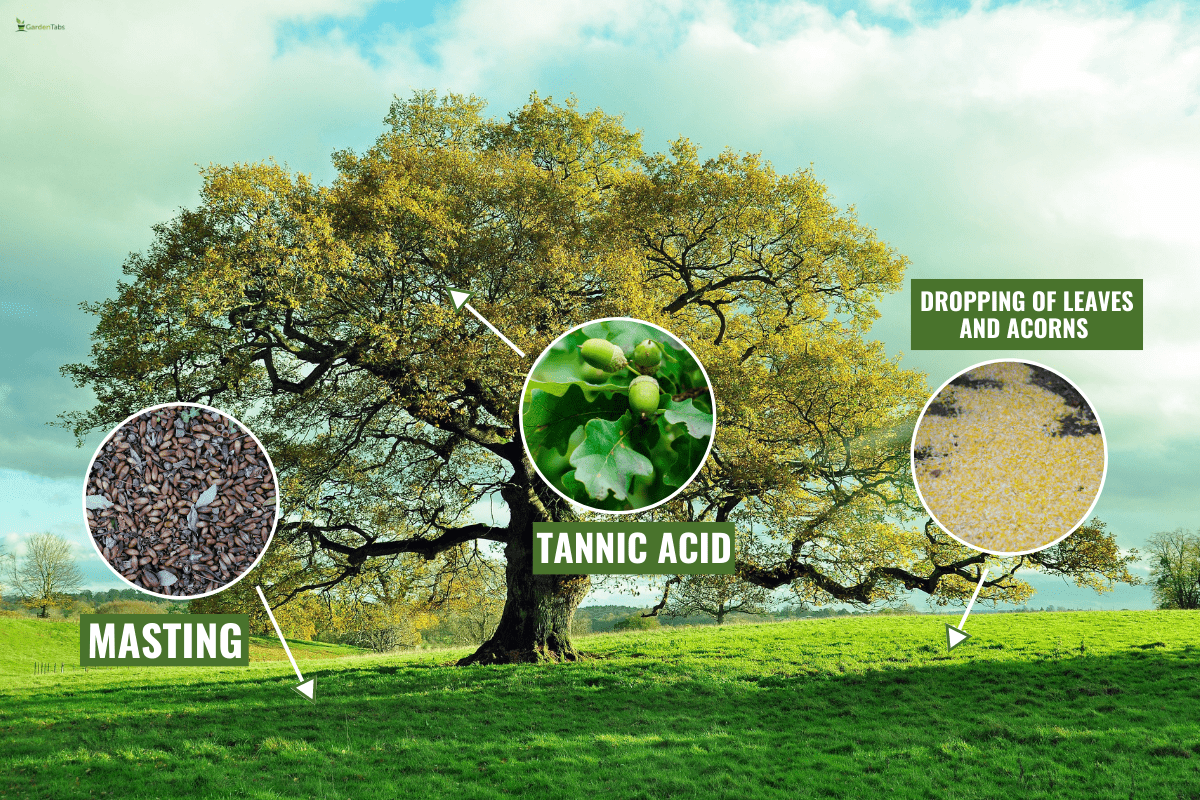
You might wonder how oak trees can last for decades and even centuries. Like any tree, they can be exposed to predators and harsh environmental conditions. Yet they are strong and adored for their resilience, whether they grow in the woods, on the city sidewalks, or in your backyard.
Oak trees have natural defenses against the elements:
Masting
Masting is referred to as selective acorn production. This occurs when oaks produce a high volume of acorns in one year and then significantly reduce the amount.
This is a natural phenomenon, and experts have established a theory that since many animals are dependent on acorns, lowering the production will decrease the population. After a few years, the oak will increase acorn production and regain its opportunity to survive and develop into a new oak tree.
Tannic Acid
Tannic acid contains tannin, which is present in the leaves and the bark of oak trees. The tannins make the leaves taste bitter and could be toxic when taken in large amounts. This will ward off predators, particularly herbivores like horses and deer.
Dropping Of Leaves and Acorns
Oak trees can also suffer stress from environmental factors such as a continuous dry season. The dropping of all acorns and leaves indicates the oak is in distress or suffering from a disease.
Experts theorize that the oak tree will forego its leaves and acorns in order to conserve energy for fighting diseases and other stress factors.
With these natural defenses, it's not surprising that the oak tree can outlive other plants in your backyard.
We have an interesting post about how to determine the age of your oak tree.
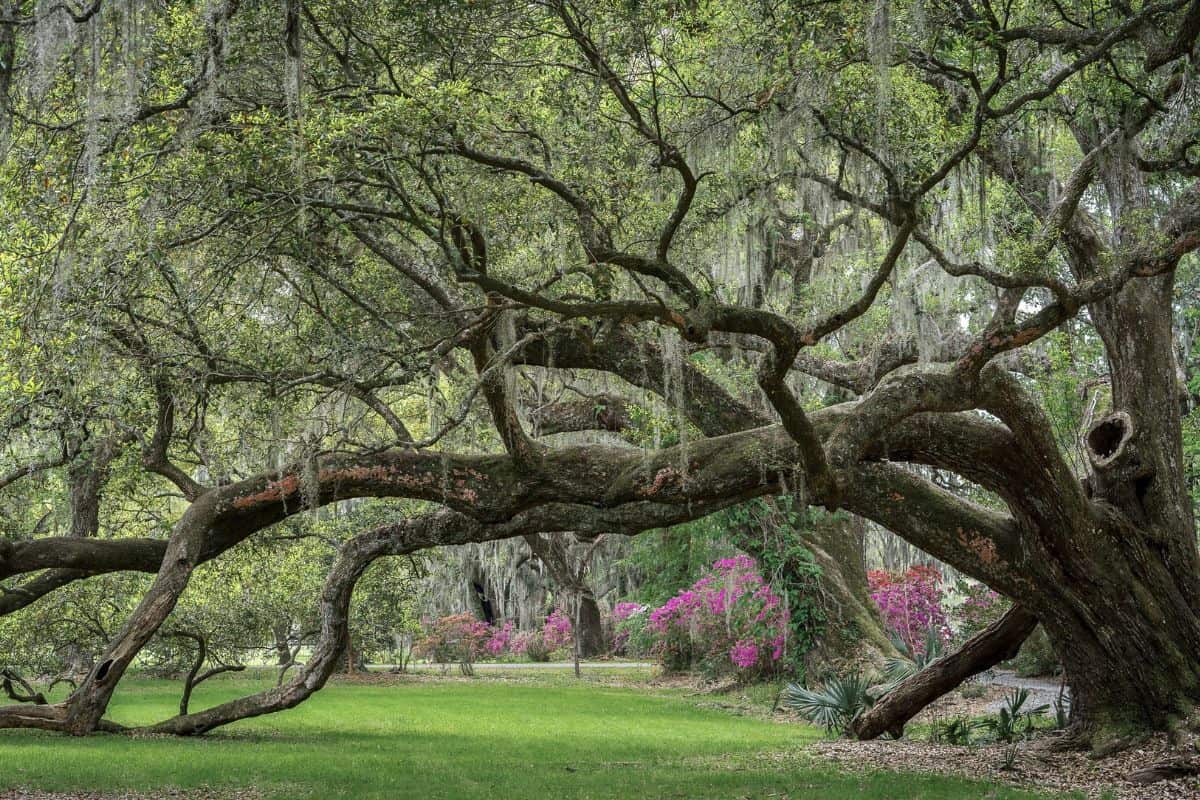
Final Thoughts
Oak trees bring beauty to your home and community. The tree's huge crown provides a nice canopy with cool shade.
Self-pollination among oaks rarely happens. Instead, cross-pollination is the predominant method of reproduction for oak trees. Acorns develop abundantly and have become an essential support element of wildlife.
On the downside, oak trees are dreaded as one of the triggers of seasonal pollen allergies. Precautionary measures and medications can be taken to lessen the impact of allergic symptoms.
The perpetuation and resilience of the oak make it one of the most highly regarded trees.
This post might have awakened your senses to consider an oak for your backyard. Read this post to learn more!
How Far From House Should Oak Tree Be Planted?


